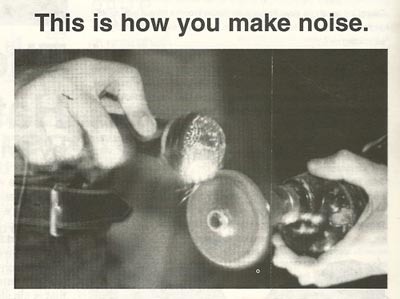But I must explain to you
In publishing and graphic design, lorem ipsum is placeholder text (filler text) commonly used to demonstrate the graphics elements of a document or visual presentation, such as font, typography, and layout. The lorem ipsum text is typically a section of a Latin text by Cicero with words altered, added and removed that make it nonsensical in meaning and not proper Latin. A close English translation of the words lorem ipsum might be “pain itself” (dolorem = pain, grief, misery, suffering; ipsum = itself).
{ Wikipedia | Continue reading }
Lorem Ipsum has been the industry’s standard dummy text ever since the 1500s, when an unknown printer took a galley of type and scrambled it to make a type specimen book. It has survived not only five centuries, but also the leap into electronic typesetting, remaining essentially unchanged. It was popularized in the 1960s with the release of Letraset sheets containing Lorem Ipsum passages, and more recently with desktop publishing software like Aldus PageMaker including versions of Lorem Ipsum.
Lorem Ipsum has roots in a piece of classical Latin literature from 45 BC, making it over 2000 years old. Richard McClintock, a Latin professor at Hampden-Sydney College in Virginia, looked up one of the more obscure Latin words, consectetur, from a Lorem Ipsum passage, and going through the cites of the word in classical literature, discovered the undoubtable source. Lorem Ipsum comes from sections 1.10.32 and 1.10.33 of “de Finibus Bonorum et Malorum” (The Extremes of Good and Evil) by Cicero, written in 45 BC. This book is a treatise on the theory of ethics, very popular during the Renaissance.
The standard Lorem Ipsum passage, used since the 1500s:
Lorem ipsum dolor sit amet, consectetur adipisicing elit, sed do eiusmod tempor incididunt ut labore et dolore magna aliqua. Ut enim ad minim veniam, quis nostrud exercitation ullamco laboris nisi ut aliquip ex ea commodo consequat. Duis aute irure dolor in reprehenderit in voluptate velit esse cillum dolore eu fugiat nulla pariatur. Excepteur sint occaecat cupidatat non proident, sunt in culpa qui officia deserunt mollit anim id est laborum.
The original version:
Sed ut perspiciatis, unde omnis iste natus error sit voluptatem accusantium doloremque laudantium, totam rem aperiam eaque ipsa, quae ab illo inventore veritatis et quasi architecto beatae vitae dicta sunt, explicabo. Nemo enim ipsam voluptatem, quia voluptas sit, aspernatur aut odit aut fugit, sed quia consequuntur magni dolores eos, qui ratione voluptatem sequi nesciunt, neque porro quisquam est, qui dolorem ipsum, quia dolor sit amet, consectetur, adipisci velit, sed quia non numquam eius modi tempora incidunt, ut labore et dolore magnam aliquam quaerat voluptatem. Ut enim ad minima veniam, quis nostrum exercitationem ullam corporis suscipit laboriosam, nisi ut aliquid ex ea commodi consequatur? Quis autem vel eum iure reprehenderit, qui in ea voluptate velit esse, quam nihil molestiae consequatur, vel illum, qui dolorem eum fugiat, quo voluptas nulla pariatur?
At vero eos et accusamus et iusto odio dignissimos ducimus, qui blanditiis praesentium voluptatum deleniti atque corrupti, quos dolores et quas molestias excepturi sint, obcaecati cupiditate non provident, similique sunt in culpa, qui officia deserunt mollitia animi, id est laborum et dolorum fuga.
1914 translation by H. Rackham:
But I must explain to you how all this mistaken idea of denouncing pleasure and praising pain was born and I will give you a complete account of the system, and expound the actual teachings of the great explorer of the truth, the master-builder of human happiness. No one rejects, dislikes, or avoids pleasure itself, because it is pleasure, but because those who do not know how to pursue pleasure rationally encounter consequences that are extremely painful. Nor again is there anyone who loves or pursues or desires to obtain pain of itself, because it is pain, but occasionally circumstances occur in which toil and pain can procure him some great pleasure. To take a trivial example, which of us ever undertakes laborious physical exercise, except to obtain some advantage from it? But who has any right to find fault with a man who chooses to enjoy a pleasure that has no annoying consequences, or one who avoids a pain that produces no resultant pleasure?
On the other hand, we denounce with righteous indignation and dislike men who are so beguiled and demoralized by the charms of pleasure of the moment, so blinded by desire, that they cannot foresee the pain and trouble that are bound to ensue; and equal blame belongs to those who fail in their duty through weakness of will, which is the same as saying through shrinking from toil and pain.
And now you can go back to just being you, instead of a one-dimensional character with a silly catchphrase
People don’t like changing their minds. Most research ties this tendency to things like status quo biases, sunk cost effects, and inaction inertia, but a new study by researchers at the University of Oslo investigates whether there is a connection between changing our minds and feelings of regret.
Through a series of experiments they discovered that people who change their minds experience more regret than those who don’t, even when the new decisions lead to positive outcomes.
‘The better telescopes become, the more stars appear.’ –Julian Barnes
An Italian experiment has unveiled evidence that fundamental particles known as neutrinos can travel faster than light. (…)
Neutrinos are fundamental particles that are electrically neutral, rarely interact with other matter, and have a vanishingly small mass. But they are all around us—the sun produces so many neutrinos as a by-product of nuclear reactions that many billions pass through your eye every second.
‘Not that we needed all that for the trip, but once you get locked into a serious drug collection, the tendency is to push it as far as you can.’ –Hunter S. Thompson

Paranormal experiences – whether it’s a psychic or an out-of-body experience or seeing a ghost – may not tell you anything about the world of the supernatural, because that world doesn’t exist, but those experiences still tell you about how your brain and mind operate. (…)
Tell us about his $1 million prize.
He has a long-standing financial reward if anyone can prove under test conditions that they’re psychic. There are various people who act as testers for him in various countries – I’m one of them in the UK. I’ve tested a few people. And it probably says something about the psychic world that in the 10 years that the prize has been up for grabs, no-one has come even close to claiming it. I tested a woman called Patricia Putt who was convinced she could give psychic readings for people, and that they would recognise their past and present in those readings. So we had lots of people come in, she would write down her readings, then we showed them to people and said you had to choose yours out of all of them. And suddenly they were at a loss. That’s because when you go for a psychic reading you know it’s meant for you. You’re sitting there, there are all these ambiguous comments, you can read into them and suddenly be impressed. Once you take away that mechanism everything collapses. (…) A million dollars – quite a large sum of money – is sitting there waiting for the first psychic who can prove they have these abilities. (…)
Does the soul weigh 21 grams?
That is where the movie title comes from. This was an American psychologist around the turn of the 20th century who put dogs onto scales, trying to weigh their souls leaving. He had some success with that, then tried the same with humans – putting very old people on the scales and waiting for them to die. But what he didn’t control for is sweating, moisture leaving the body. So 21 grams is probably much closer to the amount of moisture you lose when you die than your soul.
What exactly is a near-death experience?
A near-death experience is very similar to an out-of-body experience, which is where people think they’re floating away from their body, turned around seeing their body lying there. In a near-death experience, there is often a tunnel of light you go down towards meeting your maker. The gods you see depend very much on the culture you live in. Then the god turns you back, you return into your body and you wake up.
As we know more about how the brain creates a sense of where it is, we know more about how these experiences can be created. Now there are experiments where we can create an out-of-body experience fairly rapidly. Other researchers – and Mary Roach talks about these – write target numbers or words on pieces of cardboard and place them on top of cabinets and wardrobes in hospital wards, in the hope that somebody having a near-death or out-of-body experience will look down and see them. To date they haven’t. Which again suggests that this is an illusion rather than a genuine experience.
artwork { Alex Grey, Kissing, 1983 }
‘From one, learn all.’ –Virgil
Dolphins are known to make three types of sounds: whistles, clicks and burst pulses. Whistles are thought to be identification sounds, like names, while clicks are used to navigate and to find prey with echolocation.
Burst pulses, which can sound like quarreling cartoon chipmunks, are a muddy mixture of the two, and Dr. Herzing believes that much information may be encoded in these sounds, as well as in dolphins’ ultra-high frequencies, which humans cannot hear.
The two-way system she will test next year is being developed with artificial intelligence scientists at Georgia Tech. It consists of a wearable underwater computer that can make dolphin sounds, but also record and differentiate them in real time. It must also distinguish which dolphin is making the sound, a common challenge since dolphins rarely open their mouths.
Years of gladness, days of joy, like the torrents of spring they hurried away
Whenever we get a day like today — down more than 500 points on the Dow at one point — my phone begins ringing with inquiries from various media.
They always ask the same question: What should investors be doing NOW?
That is the wrong question. The proper one is: What should investors have done in the past to prepare for an event like TODAY?
The bottom line remains that investing is a proactive — not reactive — endeavor. If you respond to every twitch, every news story, each turn of the wheel, you will become whipsawed.
That is no way to invest. And its no way to live life, stressing out over things that are out of your control.
What you can do is anticipate events that are cyclical in nature. These major shudders repeat every few years, so we should not be surprised by them. Construct a plan that allows you to ride out these events without panic or forced errors. You need a plan that anticipates these regular occurrences.
I came into a place void of all light, which bellows like the sea in tempest, when it is combated by warring winds
The first basic law of human stupidity asserts without ambiguity that:
Always and inevitably everyone underestimates the number of stupid individuals in circulation.
{ Carlo M. Cipolla, The basic laws of human stupidity | Continue reading }
The poison is in the tail

There are four ways to deal with system damage: 1) reliability, 2) redundancy, 3) repair, and 4) replacement.
photo { Dylan Collard }
The night that hides things from us

{ “Miss A—” pictured in 1866 and in 1870 after treatment. She was one of the earliest Anorexia nervosa case studies. The term anorexia nervosa was established in 1873 by Sir William Gull, one of Queen Victoria’s personal physicians. The term is of Greek origin: an- (prefix denoting negation) and orexis (appetite). | Wikipedia | Continue reading }
Alius et idem
Are you a verbal learner or a visual learner? Chances are, you’ve pegged yourself or your children as either one or the other. (…) But does scientific research really support the existence of different learning styles, or the hypothesis that people learn better when taught in a way that matches their own unique style?
Unfortunately, the answer is no, according to a major new report.
Back in the garage with my bullshit detector
When we think about Mozart, Einstein, Michael Jordan, Bill Gates or Steve Jobs (or any other hugely successful person) we usually think about how smart they are, not how hard they worked. This creates the illusion that said individuals got to the top because they had something other people didn’t – some sort of genius. The more accurate picture is that their perseverance, work ethic and pure passion for what they did separated them from the rest of us. Unfortunately, as per Dweck’s study, kids praised for being “smart” don’t push themselves to achieve as much as they could because they believe intelligence alone breeds success. This belief causes them to fear failure, which moreover prohibits them from accomplishing and learning more. (…)
Mistakes are an essential component to learning. Learning about cognitive biases and irrational tendencies is vital, but appreciating failure and having a willingness to be wrong – to be irrational – is also essential.
Oh, you’re looking for Jimmy Jazz
How to break free of the wrong career
Ibarra (2002) believes that instead of wasting too much time planning, analysing, and researching career change options, you should take action first and work through the results iteratively afterwards. Through an action-oriented approach you can adapt, regroup your thoughts, and reorient your pathway from real-life experience. This means that your career change is never a pipedream that is too risky to implement because you are actively pursuing change. You have real-life information on which to base a decision.
It’s also a good way of exploring our many different “selves”. Ibarra quotes research from cognitive psychologist Hazel Markus (1986), Possible Selves, which explores the idea of multiple adult identities formed in the present, past and future. (…) Ibarra does not believe that we can find our one “true self” and that too much introspection will amount to nothing more than daydreams. It’s action that counts.
‘One enemy can do more hurt, than ten friends can do good.’ –Jonathan Swift

Both correlational and experimental evidence suggest that when people are sleep deprived, they feel more irritable, angry and hostile. Sleep loss is also associated with greater depressive mood. In addition, sleep deprivation seems to be associated with greater reactivity in that people who suffer from sleep loss are especially likely to react negatively when something doesn’t go well for them. For those of you interested in the brain – some research suggests that sleep deprivation enhances negative mood due to increased amygdale activity (a brain structure integral to experiences of negative emotions such as anger and rage) and a disconnect between the amygdale and the area of the brain that regulates its functions. In other words: increased negative mood, and decreased ability to regulate that anger.
Blood, black gold and the face of a judge

In 1986, CEO of Perrier North America Bruce Nevins found himself in a difficult spot. On KABC radio in Los Angeles the host challenged him to a blind taste test. The rules were simple: correctly identify a Perrier from seven drinks – six club sodas and one Perrier. Long story short, Nevins failed miserably; it took him not one or two, but five tries before he picked out the Perrier.
I stole this example from Yale psychologist Paul Bloom, author of How Pleasure Works to reinforce a point I made a few posts ago: how you taste something strongly depends on what you believe you are tasting.
{ The Psychology of Pleasure: Interview With Paul Bloom | Continue reading }
painting { Rubens, Cimon and Pero, c.1630 | At first this seems a strange subject for a painting: a young woman giving her breast to an old man tied up in chains in a bare prison cell. In fact it is a story from Roman history: the tale of Cimon and Pero. Cimon is Pero’s father. He is in prison awaiting execution and has been given nothing to eat. Pero has recently had a child and saves her father from starvation by secretly giving him her breast. This relatively large picture was painted by the famous Antwerp artist, Peter Paul Rubens. To enliven the scene, Rubens has added two prying prison guards on the right. }
Beat the drums tonight, Alphonso, spread the news all over the grove
In December 2010, two independent laboratories have demonstrated that a full genome-wide analysis of the fetus could be performed from a sample of maternal blood, making fetal diagnostic testing possible in the future for any known genetic condition. The convergence of cffDNA (cell-free fetal DNA) testing with low cost genomic sequencing will enable prospective parents to have relatively inexpensive access to a wide range of genetic information about their fetus from as early as seven weeks gestation.
This article examines a range of ethical, legal and social implications associated with introducing NIPD (non-invasive prenatal diagnosis) into prenatal practice.
After the death of God, Friedrich Nietzsche wrote, health was elevated to a goddess
{ Thanks Glenn! }
‘You will die and find out everything — or cease asking.’ –Tolstoy

We all have personal stories about who we are and what the world is like. These stories aren’t necessarily conscious, but they are the narratives by which we live our lives. Many of us have healthy, optimistic stories that serve us well. But sometimes, people develop pessimistic stories and get caught in self-defeating thinking cycles, whereby they assume the worst and, as a result, cope poorly. The question then becomes how to help people revise their negative stories.
{ Timothy D. Wilson/Scientific American | Continue reading }
images { 1. Willem de Kooning, Reclining Nude, c. 1938 | 2. Karlina Caune by Andreas Öhlund }















